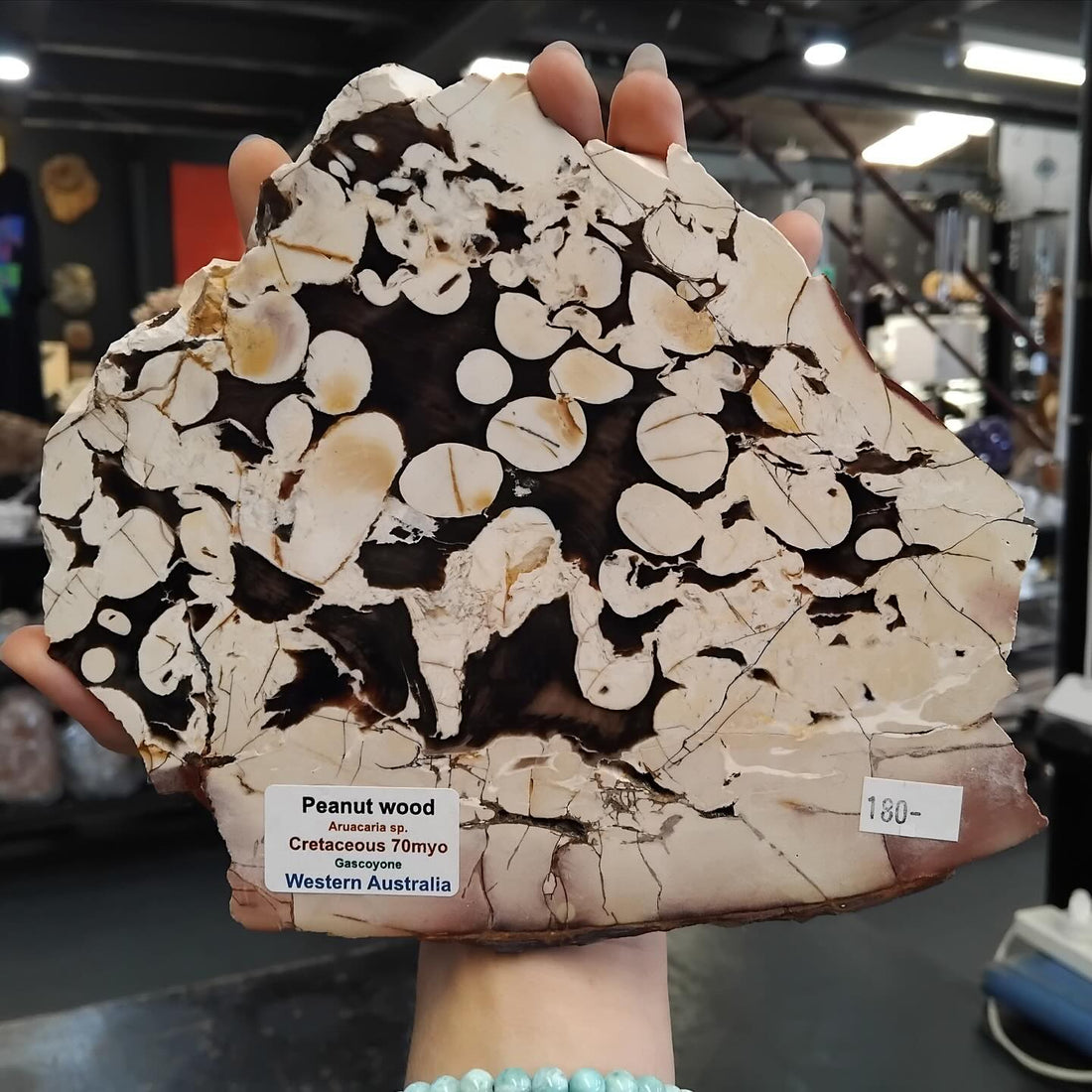
Peanut Wood - A Journey from Tree to Gemstone
Share
Peanut Wood
A Journey from Tree to Gemstone
Peanut wood is a fascinating and unique type of petrified wood that tells a story millions of years in the making. Originating from the Kennedy Ranges of Western Australia, this fossilised wood is not only a beautiful natural specimen but also a window into Earth’s ancient past.
The Origins of Peanut Wood
During the Cretaceous period, the area now known as Western Australia was covered by a shallow, salty sea. Conifer trees that fell and were carried by rivers ended up as driftwood in this sea. It was here that the journey of peanut wood began.
Shop Our Range Of Agates From Peanut Wood Here
The Role of Shipworms
The characteristic feature of peanut wood—its peanut-like markings—comes from the activity of marine clams known as shipworms. These clams would bore into the driftwood, leaving behind holes that would later become filled with white radiolarian sediments.
From Driftwood to Fossil Gem
Over time, the wood became petrified, preserving the shipworms’ boreholes as the distinctive markings we see today. The dark brown to black color of the wood contrasts beautifully with the white-to-cream markings, making peanut wood a sought-after material for jewelry and decorative pieces.
Peanut wood is now considered a gem material, valued for its unique appearance and history. It serves as a reminder of the dynamic processes that shape our planet and the traces of life from long ago that can be preserved in stone.
Shop Our Range Of Agates From Peanut Wood Here
References: